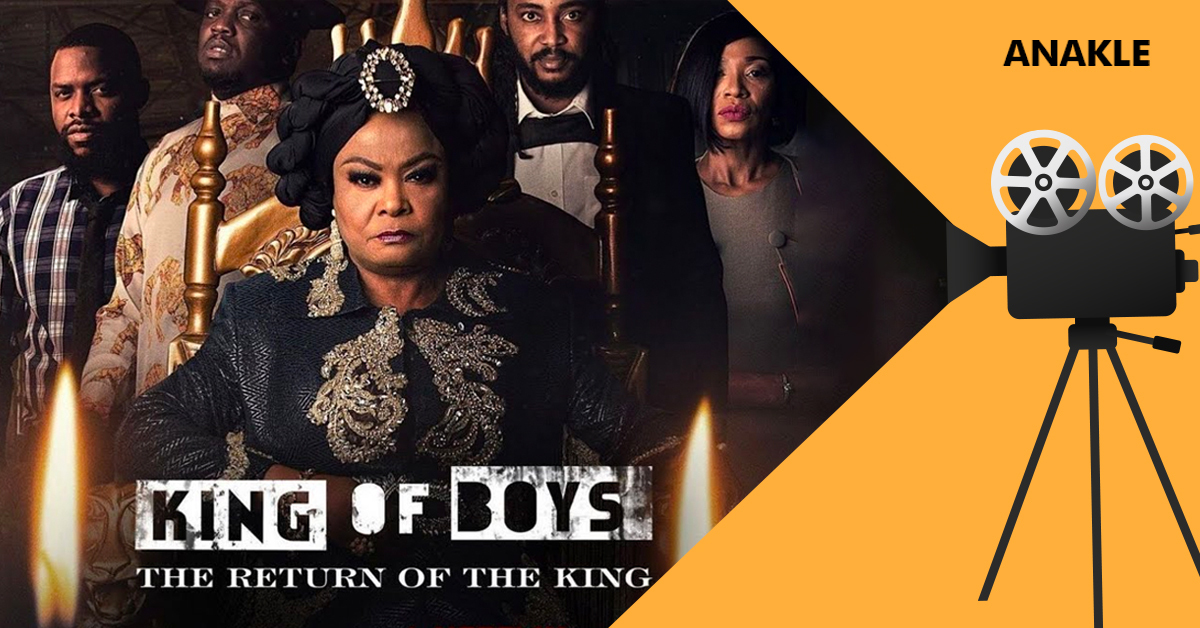After a successful debut in 2018, King of Boys returned on the heels of buzzing social media anticipation, breaking through the “sophomore curse” in a seven-episode series. The sequel colours the life of a popular political socialite, daredevil mastermind and underworld leader – Eniola Salami – after the traumatic loss of her children and near-decimation of her criminal empire.
The series features a refreshing mix of suspense, horror, humour and betrayal, centred on its theme of criminality, politics and gangsterism -infused with a rich expression of indigenous Nigerian culture and colloquialisms. Its reception has been so successful that it has seeped quickly into Nigerian pop culture, along with the speculations and theories around Makanaki’s surprising return from the dead. We will leave you to draw your conclusions while we share some elements of the film that caught our eyes.
Sound & Music
Sound connects an audience to the moving pictures on-screen. Without it, any production is simply unrealistic to the viewer. Sound in a film production includes sound effects, dialogue, music, ambient noise, background/foreground noise and soundtracks. The simple yet foreboding cock of a gun; the chirp of a cricket; the swoosh of a knife digging into human flesh, gave us a chance to experience the realism of the plot for ourselves. A remarkable feature in this regard was the dialogue between key characters in the series – Eniola Salami and Jumoke Randle. The dialogue between these characters emit a realism and authenticity that pierces through TV screens into our minds – making us an unseeable character immersed firsthand in the action and experience.
Cinematography
A solid combination of on-screen visual elements, enrapturing camera movements, unique lighting features, camera angles and framing is at the heart of the KOB series. An array of intriguing set designs, featuring beautifully and extravagantly furnished mansions and guest houses as well as; overcrowded one-bedroom homes transport us into the ethereal world of the elites and the underdogs depicted in the movie.
Costume & Makeup
A character’s performance in any production is enhanced by costume and makeup. Eniola Salami’s regal, bold and audacious outfits enhanced the quality of her character while communicating, in aesthetic details, her personality as a criminal mastermind and a friend of the people. The bold choices for lead characters enhanced their importance, relevance and significance to the plot while maintaining a relation to reimagined styles, synonymous with the evolving trends in modern Nigerian fashion.
Worthy of mention is the use of character makeup to highlight certain attributes in a character that draws the audience towards a familiar conclusion about a character’s motivations, e.g the browned teeth of a seemingly devout and uncompromising priest.
Acting
The best acting, they say, is instinctive and KOB leaves no surprises in this regard with its stellar repertoire of actors. New characters debuted in the returning series featuring the likes of Nse-Ikpe Etim, Charly Boy, Taiwo Ajayi Lycett, Deyemi Okanlanwon amongst others. Nse Ikpe Etim’s performance as Mrs. Jumoke Randle held us spellbound and in awe of her artistry, while some of our favourite returning actors like Sola Sobowale, Toni Tones, Akin Lewis, Illbliss and Reminisce reminded us why KOB was such a great hit the first time.
The film industry in Nigeria is experiencing a gradual shift as more unique and dynamic stories are being told. We’re seeing filmmakers explore unpopular themes that are opening up the minds of the audience to new perspectives. We’re here for it, and we can’t wait to see more dynamic stories like this. Can you think of any Nigerian film that has highlighted a unique perspective? Let us know in the comments below. We’ll catch up in the next film review, until then – “Till I die, Oba”.

